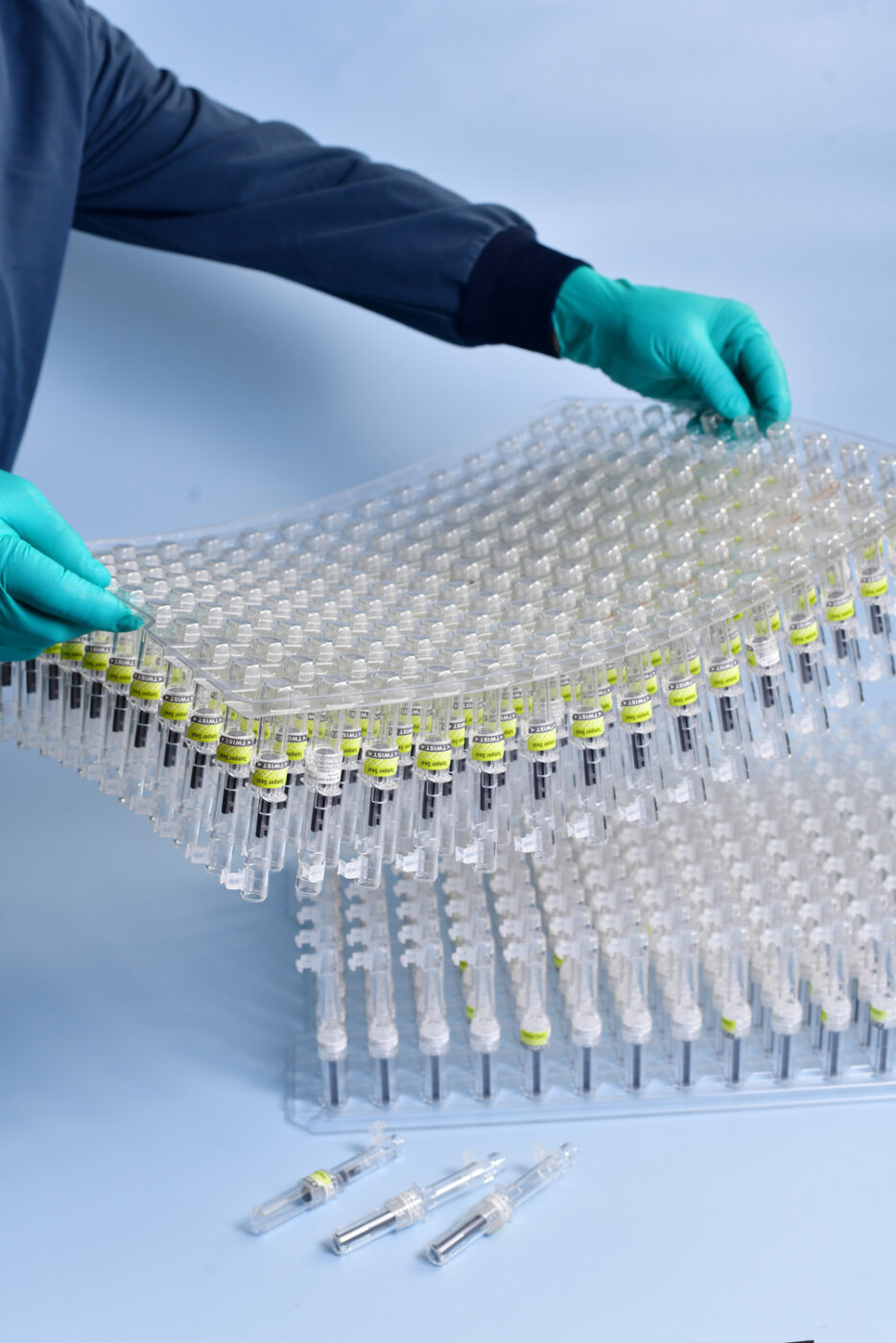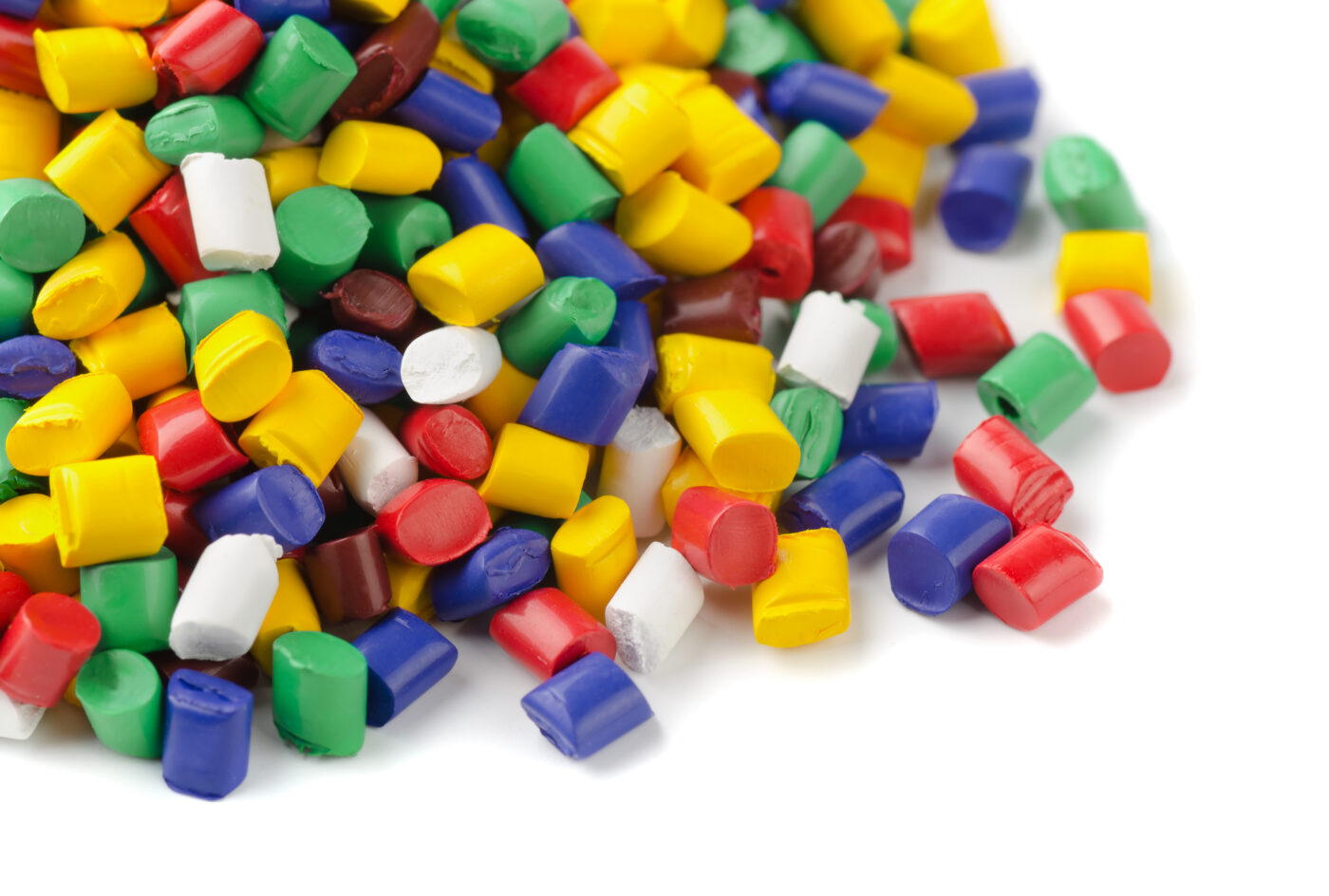
In the fast-paced world of healthcare and pharmaceuticals, thermoformed automation trays, also…


The thermoforming process is really a very simple one. Thermoforming is the process of heating a material to its forming temperature and applying force to the hot sheet to push it into cavities. This is typically in the form of an aluminum mold so the material conforms to the shape of that particular configuration. The forces applied are any of three different methods: mechanical assist (plugs), vacuum, and form air.
Material is typically supplied in rolls, or as part of an in-line process. These rolls are often produced in an extrusion facility or purchased. Resin pellets, industrial regrind, and post-consumer regrind, are widely used for in-line thermoforming and for extruding roll stock. Plastic Ingenuity has its own extrusion capabilities, providing more control over the entire process.
Next, the extruded plastic sheet is fed into a thermoformer and conveyed into the heating oven via chains. These chains convey the sheet through the heating oven, form station, and trim station of the thermoforming machine.
When the material reaches its optimal temperature, it is transported to the forming station where the mold begins to close on the pliable sheet. For most molds, plugs force the material into the mold cavities, vacuum air draws the plastic over the mold and into the cavities, and air pressure is applied to move the material into the custom mold cavities.
Once the sheet has been formed into precise plastic parts, it advances to the trim station where it is extracted by either a steel rule die or matched metal trim press. The remaining plastic is collected and recycled back into the process to make more parts.
At PI, we specialize in thermoforming plastics for standard and custom sizes, generally using PET plastic. In the industry, though, there are myriad plastics available to address your specific needs, and we have experience with nearly all. We will outline a few that we process at high volumes, in addition to the other plastics we consistently work with.
One of the most common thermoformed plastics, PET, or polyethylene terephthalate, is commonly used for thermoformed packaging, and synthetic fibers and bottle production. Once molded into a shape, PET plastic must be dried. Once finalized, products made from PET plastic have a great resistance and barriers from outside elements, like oxygen and water. This plastic is also one of the most recycled types of materials.
PETG, or polyethylene terephthalate – glycol modified has good clarity, impact strength, and moderate resistance to acids and alkalis. PETG is relatively easy to thermoform and can be heat or RF (radio frequency) sealed without getting cloudy. PETG is desired for its reputation of being a stable, clear, tough, and a favorable choice for auto-denesting in healthcare applications.
Polypropylene has become one of Plastic Ingenuity’s highest volume plastic resins. PP is translucent in its unpigmented, unfilled state. The translucency is the result of crystallites that are larger in dimension than the wavelength of light thereby interfering with light transmission, resulting in “contact transparency”.
There are four general classifications of polypropylene:
HIPS plastic, or high impact polystyrene, can be used for foamed or rigid plastic. This plastic’s clear and brittle composure makes it an ideal plastic for protective packaging for food and drink items, like clamshell containers and trays. This plastic is typically easy to form and an economical option.
If you want to learn more about thermoforming materials, please contact us, or follow us on LinkedIn.
